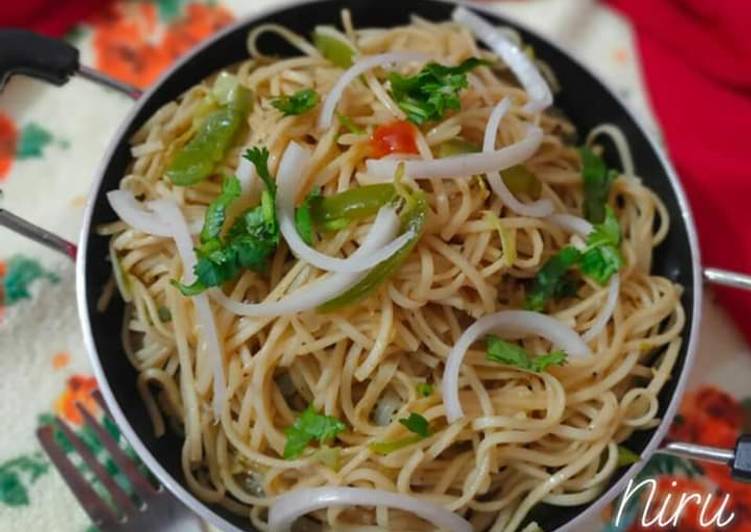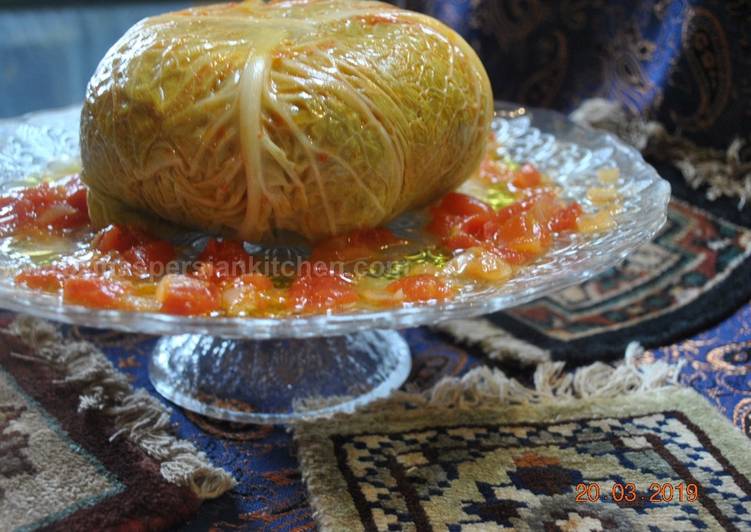
Hey everyone, it is Drew, welcome to our recipe site. Today, I’m gonna show you how to make a distinctive dish, veg hakka noodles. One of my favorites food recipes. For mine, I am going to make it a little bit unique. This will be really delicious.
Veg Hakka Noodles is one of the most well liked of recent trending meals in the world. It is enjoyed by millions daily. It is easy, it is fast, it tastes yummy. Veg Hakka Noodles is something that I’ve loved my entire life. They’re fine and they look fantastic.
Veg hakka noodles is an Indo-Chinese preparation that is made by tossing boiled noodles and stir fried vegetables in Chinese sauces. The vegetables give it an enjoyable crunchy texture and the soy and chilli sauces give it a distinctive flavor. This dish is very popular across all of India and is often served in Indian Restaurants or in parties.
To get started with this particular recipe, we must prepare a few ingredients. You can cook veg hakka noodles using 10 ingredients and 6 steps. Here is how you cook that.
The ingredients needed to make Veg Hakka Noodles:
- Take 2 packets veg Hakka Noodles
- Make ready 2 thinly sliced onions
- Make ready 1 thinly sliced capsicum
- Prepare 1 cup thinly sliced cabbage
- Prepare 1 tsp black pepper powder
- Make ready 1 tbsp soya sauce
- Prepare 1 tbsp vinegar
- Prepare 2 tbsp chowmein hakka noodles masala
- Take to taste Salt
- Prepare 2 tbsp oil
However, in order to get the restaurant like taste and texture it needs to be cooked in a certain way and this step by step recipe of veg hakka noodles explains it with photos and detailed instructions. The tips and serving ideas given after directions will also help you avoid some common mistakes which can ruin the dish. Hakka Noodles are Chinese-style noodles that are made in a wok on high heat. This dish is widely popular at most Indo-Chinese restaurants.
Steps to make Veg Hakka Noodles:
- Heat sufficient water in a vessel, add salt, when water starts boiling pour noodles and keep boiling, add 1 tbsp oil to prevent sticking
- When noodles cooked well switch off the flame and cool the noodles immediately by running it under cold water. This stops the cooking process and prevents the noodles from getting too soft and soggy, then stain the water and keep aside
- Now we will heat oil in a large frying pan on high heat and once the oil is hot add cabbage, capsicum, onions and salt and saute on high flame until it has cooked
- Once the vegetables are cooked add cooked noodles and mix well and add soya sauce, vinegar, noodles masala, pepper powder and stir fry for two minutes
- Once done stir in the cooked noodles and mix well to combine, turn off the flame and transfer veg Hakka Noodles to a serving bowl
- Note– You can add carrots, green beans in vegetables and also can add red chilli sauce for more taste
Love thy noodles will take on a new meaning altogether once you have tried the extremely popular Vegetable Hakka Noodles. Commonly served in most Indian restaurants and street side eateries, these Indo-Chinese Hakka Noodles are a perfect balance of crunch, relish and goodness. there is a subtle difference between normal noodles recipe and veg hakka noodles recipe. firstly, the main difference between those two is the style of preparations. basically, this recipe is tossed fried recipe wheres as noodles are a stir-fried recipe. secondly, hakka noodles is prepared using the thin rice noodles whereas noodles recipe can be prepared with any type of noodles. lastly. Vegetable Hakka noodles are also more commonly known as Vegetable Chow Mein. This is a popular Indo-Chinese dish. Vegetable hakka noodles consists of stir fry noodles with a variety of vegetables.
So that’s going to wrap this up for this exceptional food veg hakka noodles recipe. Thanks so much for your time. I am confident that you can make this at home. There’s gonna be interesting food at home recipes coming up. Remember to bookmark this page on your browser, and share it to your loved ones, colleague and friends. Thanks again for reading. Go on get cooking!

